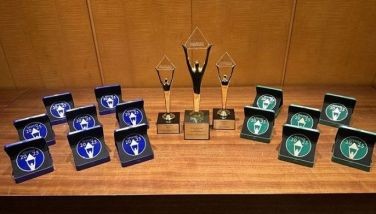Is copper the new gold?

MANILA, Philippines – A PhilStar report last Monday about the expectation of the Department of Environment and Natural Resources (DENR) for a big inflow of investments into a variety of mining projects appears to be in line with international developments. The DENR is expecting some $606.86 million in investments in priority mining projects this year and up to $2.488 billion thereafter as projects move from the exploration and feasibility stage to construction and development.
Depending on political conditions in the countryside, the DENR may even be underestimating potential growth of investments in our mining industry, particularly in copper and gold. Two very recent articles in the Telegraph, a London newspaper, point out renewed interest in various metals, particularly copper, as a way to preserve value in these troubled times.
The price of copper has risen by more than 50 percent this year despite estimates that world demand will fall 15 to 20 percent as construction wilts. Investors will be forgiven if they missed the rise in copper because it is only a year ago when the price of metals nose-dived. Orders for metals dried up overnight and as the Telegraph noted, “the subsequent price falls have been deeper than during the worst years of the Great Depression.”
But the Telegraph noted the view of a mining analyst at Fairfax, the investment bank, who thinks there is more than a glimmer of hope for a metals revival. The analyst is revising many of his metal forecasts upwards because of several factors, including a weaker US dollar, inflation fears and the renewed demand from China.
China’s State Reserves Bureau (SRB) has been buying copper and other industrial metals over recent months on a scale that experts say appears to go beyond the usual rebuilding of stocks for commercial reasons. There is clearly more behind the move. Copper may be the new gold.
The Telegraph quotes Nobu Su, head of Taiwan’s TMT group, which ships commodities to China, who said Beijing is trying to extricate itself from dollar dependency as fast as it can by buying metals, particularly copper. “China has woken up. The West is a black hole with all this money being printed. The Chinese are buying raw materials because it is a much better way to use their $1.9 trillion of reserves. They get ten times the impact, and can cover their infrastructure for 50 years.”
Mr. Su continues: “The next industrial revolution is going to be led by hybrid cars, and that needs copper. You can see the subtle way that China is moving into 30 or 40 countries with resources.” The SRB has also been reported accumulating aluminum, zinc, nickel, and rarer metals such as titanium, indium (thin-film technology), rhodium (catalytic converters) and praseodymium (glass).
Jim Lennon, the head of commodities trading at Macquarie Bank agrees. He told the Telegraph, “they are definitely buying metals to diversify out of US Treasuries and dollar holdings.”
Another analyst, John Reade, metals chief at UBS, told the Telegraph that Beijing may have made a strategic decision to stockpile metal as an alternative to foreign bonds. “We’re very surprised by Chinese demand. They are buying much more copper than they will need this year. If this is strategic, there may be no effective limit on the purchases as China’s pockets are deep.”
There’s even talk of China creating a “copper standard” for the world’s currency system. The Telegraph observed that Zhou Xiaochuan, the central bank governor, piqued the interest of metal buffs last month by calling for a world currency modeled on the “Bancor”, floated by John Maynard Keynes at Bretton Woods in 1944.
The Bancor was to be anchored on 30 commodities – a broader base than the Gold Standard, which had caused so much grief in the 1930s. Mr Zhou said such a currency would prevent the sort of “credit-based” excess that has brought the global finance to its knees.
The Telegraph pointed out that if his thoughts reflect Communist Party thinking, it would explain the bizarre moves in commodity markets over recent weeks. The jump in copper demand “is largely due to Chinese imports, which reached a record 329,000 tons in February, and a further 375,000 tons in March. Chinese industrial demand cannot explain this. China has been badly hit by global recession. Its exports - almost half GDP – fell 17 percent in March.”
One thing is clear, the Telegraph points out, “Beijing suspects that the US Federal Reserve is engineering a covert default on America’s debt by printing money. Premier Wen Jiabao issued a blunt warning last month that China was tiring of US bonds when he expressed concern about the safety of Chinese assets.
“The beauty of recycling China’s surplus into metals instead of US bonds is that it kills so many birds with one stone: it stops the yuan rising, without provoking complaints of currency manipulation by Washington; metals are easily stored in warehouses, unlike oil; the holdings are likely to rise in value over time since the earth’s crust is gradually depleting its accessible ores. Above all, such a policy safeguards China’s industrial revolution, while the West may one day face a supply crisis.”
Beijing may yet buy gold as well, the Telegraph opines, although it has not done so yet. “The gold share of reserves has fallen to one percent, far below the historic norm in Asia. But if a metal-based currency ever emerges to end the reign of fiat paper, it is just as likely to be a ‘Copper Standard’ as a ‘Gold Standard’.”
There are other explanations for the jump in metal prices. It was pointed out that “the central banks’ stimulus to kick-start the flagging car industry could also provide a fillip to metals. For example, more than 80 percent of lead is used for car batteries, while 53 per cent of a car is made from steel… sales of cars rose sharply in Germany in February after its government introduced a stimulus plan which allows consumers to trade an old car for a new one with state aid of 2,500 euros .
What does it mean for local investors? Before anyone rushes to put money into some of the listed issues with interest in copper operations, it is important to bear in mind that many of our copper mines or proposed copper mines are bogged down in conflict with local religious and environmental groups. A lot of hope had been built up on the rebirth of our mining industry but nothing much has happened due to grassroots opposition.
Copper may be the new gold but with our luck probably not here right now.
Pantao port
Remember Pantao port in Albay? Constructed by the Philippine Ports Authority at a cost of over P200 million, it was severely damaged by typhoon Milenyo before it could even be used. The entire flooring of the port was demolished and only its posts remained intact. The Pantao Port was supposed to serve local and international vessels as a major hub of sea transportation in the country.
Albay Gov. Joey Salceda texted me that plans for the restoration of Pantao Port with Libon Pantao Road funded by JBIC is now complete. Gov. Salceda said he required PPA to upgrade specs so it could withstand winds of up to 244 kph instead of 176 kph original design. It should also be insured not just for fire but for typhoons and storm surges. While the port is a corporate asset of PPA, it has significant impact on economy of Albay and the Bicol region. It is the only major infrastructure destroyed by Reming/ Milenyo not yet restored… three years after.
News
The shipwrecked mariner had spent several years on a deserted island. Then one morning he was thrilled to see a ship offshore and a smaller vessel pulling out toward him.
When the boat grounded on the beach, the officer in charge handed the marooned sailor a bundle of newspapers and told him, “The captain said to read through these and let us know if you still want to be rescued.”
Boo Chanco’s e-mail address is bchanco@gmail.com
- Latest
- Trending


























